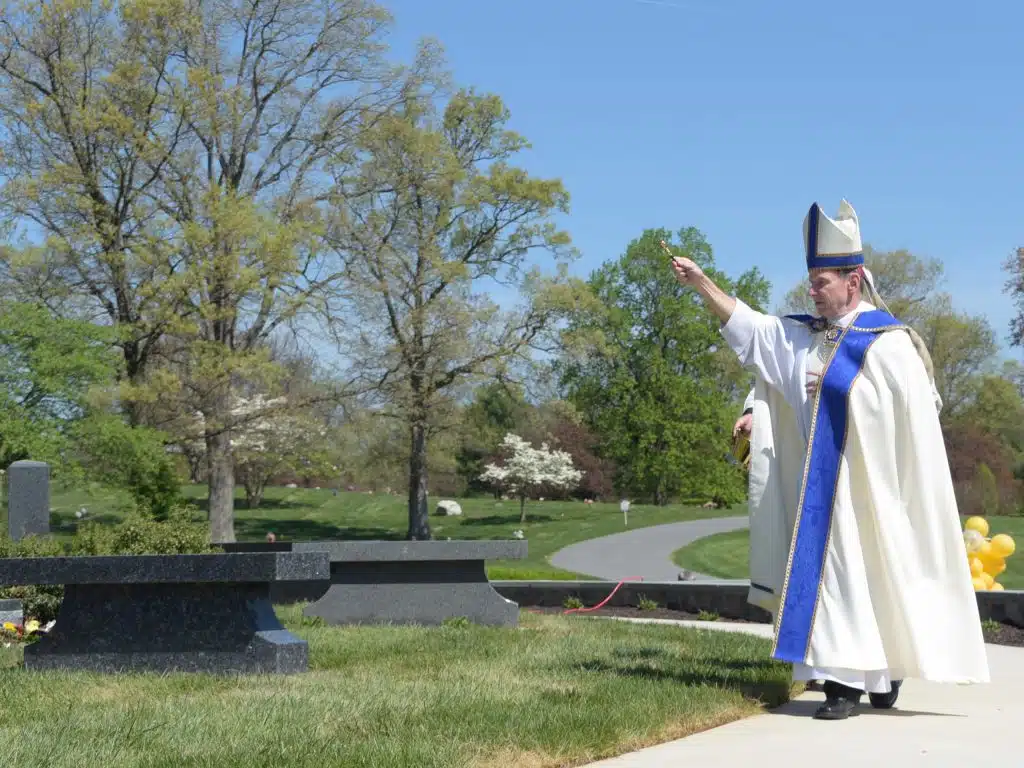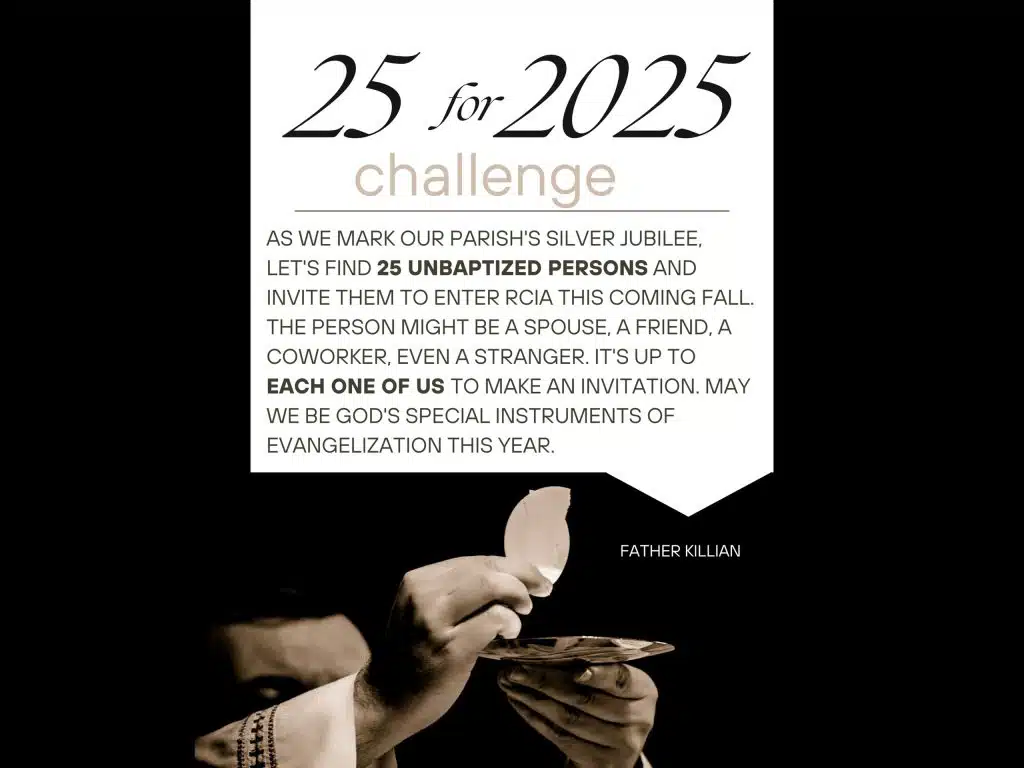It was the summer of 1992, and in a tucked-away restaurant in Kolkata, India, a 22-year-old American used nearly two-thirds of his remaining money to make a long-distance phone call to the United States.
The news shared over the receiver was what he’d prayed it would be, but it was not a complete surprise. A living saint had helped.
Stefan P. Starzynski was spending more than two months alongside Mother Teresa and about 75 Missionaries of Charity in Kolkata — witnessing her holiness in action and sharing in her work tending to the poorest of the poor.
Now a priest serving as chaplain at Inova Fairfax Hospital, Father Starzynski said the experience gave him some of his most treasured spiritual blessings. It established Mary as a daily source of strength and comfort, helped root his life in prayer, and showed him what radical faith looks like.
“Because she made a vow that she would never say no to God, she was willing to take risks,” said Father Starzynski. “We all have to be willing to do that, to say yes to God, even when He asks the unexpected.”
‘God provides’
A recent college graduate, Father Starzynski first spent a few weeks with his father, who was working as a U.S. diplomat in New Delhi, before leaving the nation’s capital for Kolkata.
The poverty the young man encountered was stunning. “Hundreds of people were sleeping on the streets,” he recalled. “Children on carts were begging. Many people were hungry.”
His plans in Kolkata were simple. “I just showed up and asked the Missionaries of Charity how I could help,” he said.
Throughout the summer, Father Starzynski said he made sure “not to bother Mother Teresa,” recognizing that she often was bombarded with attention as the recipient of the Nobel Peace Prize and a worldwide figure of interest.
Living at an Episcopal cathedral near the motherhouse, he joined the nuns each morning for Mass and a Holy Hour. During the Holy Hour, the windows were kept open to the city, so “it was the nosiest Holy Hour you can imagine,” said Father Starzynski. But in a sense, the noise was fitting. “Part of Mother Teresa’s spirituality was that she was a contemplative in the world,” he said. Her goal was not to shut the world out, but enter into it and “find the Lord within.”
Father Starzynski recalled what it was like watching Mother Teresa receive Communion during Mass. After bowing to a statue of Mary, “her face would light up” as she received the Eucharist, he said. “You could see without a doubt that she believed she was taking in God.”
Father Starzynski spent the rest of his mornings and evenings at the first two facilities founded by Mother Teresa — Kalighat, a hospice for the sick, destitute and the dying, and Prem Dan, a long-term convalescent facility.
Prayers, especially Marian prayers, grounded everything the nuns did, said Father Starzynski, who was inspired to consecrate himself to Mary daily.
Each day in Kolkata, he cleaned the sores of a man whose skin was like leather and “whose body was twisted like a pretzel.”
In those intimate moments, he was able to grasp fully a key observation of Mother Teresa: “When you take care of a single poor or suffering person, you can see God in that person,” said Father Starzynski.
He added that although she’s known for her work with the materially poor, Mother Teresa wanted the world to understand that poverty “is not simply the lack of food.”
“She showed that the greatest poverty is a lack of love, which is found regularly in the First World — in nursing homes where the elderly man keeps looking at the door for a person who never comes,” he said.
During his time in Kolkata, Father Starzynski had the opportunity not only to experience Mother Teresa’s works and wisdom firsthand but also to observe her everyday reliance on faith.
One afternoon, he and another volunteer were responsible for picking up food for the sisters.
“But there was rioting in the streets and we couldn’t get through,” Father Starzynski said. “Mother Teresa said that never once had they gone without food — that God always provided.” But returning to the sisters empty-handed, he wondered if Mother Teresa’s claim would hold.
“Then, exactly at dinner time, a man showed up at the motherhouse from a restaurant,” said Father Starzynski. “He said he had more than enough food and asked, ‘Do you want it?’
“It helped me see this idea … that if you live by faith, God provides,” he said.
A call to remember
Although his plans were as sparse as his cash when he arrived in Kolkata, Father Starzynski had a specific dream for his future: the priesthood. He’d applied to be a seminarian for the Arlington Diocese, and while in India he was waiting to hear if he’d been accepted.
“Ninety-nine percent of the time, I didn’t bother Mother Teresa, but one day I made a beeline to her as she stood on a balcony,” said Father Starzynski. He had a specific request: Would she pray three Hail Mary’s for his vocation?
“She replied yes,” he said, his eyes sparkling as he recalled the interaction years ago.
A week later, Father Starzynski called Arlington from the restaurant phone and heard the news: He’d been accepted.
That fall he would enroll at Mount St. Mary’s Seminary in Emmitsburg, Md., and four years later, he was ordained a priest.
“It was a miracle of grace that I was accepted, and it’s a miracle of grace that I’ve remained in the priesthood,” said Father Starzynski, who attributes much of that grace to Mother Teresa’s potent prayers.
Father Starzynski said Mother Teresa’s life also has informed his understanding of a vocation.
On Sept. 10, 1946, during a train ride from Kolkata to Darjeeling for a retreat, Mother Teresa received her “call within a call” — God’s request that the then-Loreto sister dedicate her life to the poorest of the poor.
Priests similarly must recognize their own “call within a call,” said Father Starzynski. “We each have our call to the priesthood, but then we are also called to discover our own path, for example to be a chaplain or to work with youths.” He added that the concept applies to all vocations. “A person must discover what kind of mother we are meant to be, what kind of father.”
Father Starzynski said that Mother Teresa’s life in some ways parallels that of St. Francis, whose conversion occurred after he kissed a leper. Her life was forever altered when she passed through the gates of her Loreto convent and cared for an old man lying sick in the road.
“It was one step they took” that brought them to their life’s work, said Father Starzynski. To live one’s call within a call — our own unique place in God’s plan — begins with a small but sometimes radical act, he said.
“Mother Teresa showed that God doesn’t give you a blueprint for holiness. He gives you a single step, and you take it with trust.”


